Ingmar Bergman “was not at all what you might expect: the formidable, dark, brooding genius. He was a regular guy. He commiserated with me about low box-office grosses and women and having to put up with studios.
“He confided about his irrational dreams, that he would show up on the set and not know where to put the camera and be completely panic-stricken. He’d have to wake up and tell himself that he is an experienced, respected director and he certainly does know where to put the camera. But that anxiety was with him long after he had created 15, 20 masterpieces. The world saw him as a genius, and he was worrying about the weekend grosses.
“Yet he was plain and colloquial in speech, not full of profound pronunciamentos about life. Sven Nykvist [his cinematographer] told me that when they were doing all those scenes about death and dying, they’d be cracking jokes and gossiping about the actors’ sex lives.” — Woody Allen, who met Bergman once and spoke to him many times after that, speaking to Time‘s Richard Corliss.
Day: August 2, 2007
Shoot schmooze
Working on a film set is emotionally exhausting because each and every actor and crew person is obliged to be “on” all the time like a vaudeville performer — smiling, spirited, quick with a quip. And you have to keep it going for ten, twelve, fourteen hours a day. All that charming alpha stuff is great, of course, but it has to be real. Undercurrents of fear (i.e., concerns about not getting hired on the next job unless everyone you meet likes you) have a way of taking the bloom off.
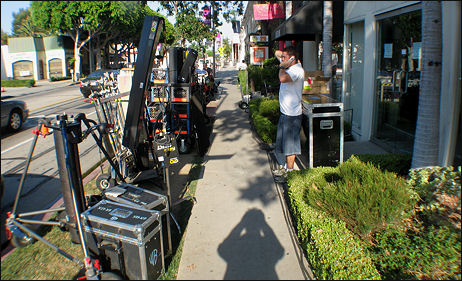
A shoot on Melrose and Huntley — 8.2.07, 5:55 pm.
DePalma’s “Redacted” summarized
Update: A Magnolia Pictures staffer told me yesterday there was a long-jead journo screening in Manhattan two days ago for Brian De Palma‘s Redacted. That was wrong, I’ve now been told — the screening was “for some festival committees.” I asked to speak directly to Magnolia Pictures chief Eammon Bowles about this but he never returned the call, so I accepted the word of an underling.
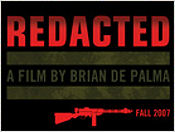
Redacted only wrapped about three months ago, but it will play in Toronto in September and open in the fall. A DePalma fan site has quoted a “source” who saw the HD-shot film, and the short verdict is that this “Rashomon-style series of video diaries based on a single incident between American soldiers and Iraqi citizenry” is “very good.”
The video diaries come from several sources, including an American soldier, an Iraqi, and a terrorist website, among others.” The source adds that the film is “intense” and “very affecting,” and that “it feels like the work of a young man.”
“The Invasion” is coming
Update: Warner Bros. will screen Oliver Hirschbiegel‘s The Invasion (8.17) next Tuesday, which is the only screening I’ve heard of thus far. By any fair-minded standard, this body-snatchers movie with Nicole Kidman and Daniel Craig has been playing hide-the-ball. It doesn’t look too bad, to judge by the trailer. “You’ll feel the same the next morning,” “Don’t show emotion,” etc. What do people expect from this thing…innovation? It’s an old shoe with new soles and a spit-shine.
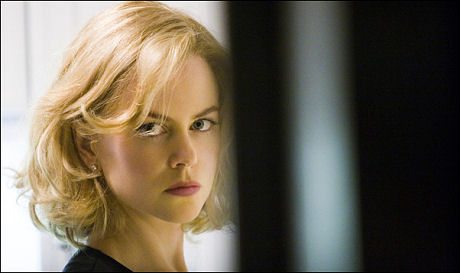
It was reported months ago that The Invasion doesn’t bear the stamp of the German-born Hirschbiegel (Downfall) as much as that of producer Joel Silver and reclusive weirdo directors Larry and Andy Wachowski‘s.
Collider.com‘s Steve Weintraub wrote four months ago that Hirschbiegel’s original cut didn’t go down all that well with Silver and various WB suits (i.e., not enough action beats) so Silver brought in the Wachowskis for a fix job. They reportedly re-wrote 2/3 of it and then got James Teigue, the Wachowski flunky who directed V for Vendetta, to shoot the additional footage.
I haven’t seen the TV trailer, but a friend says it’s all Kidman and no Craig. What, does he have poison ivy? On top of which The Invasion isn’t tracking all that strongly. Tough times and agitated mindsets over at Warner Bros.
List Queens
A very tiresome list from The Oregonian‘s Shawn Levy and Grant Butler of actors who’ve played the same character in three or more entries of two different film series. I don’t like lists of this nature. Levy is on the best and brightest film guys out there, but he should watch it — people who think up and post these articles run the risk of being called list queens. And they don’t get themselves off the hook by using the word “dubious” to describe the criteria.
Running dogs
Nervepop’s Bilge Ebiri has two “Greatest Running Scenes in Movie History” pieces up — part 1 and part 2. The usual suspects (Franka Potente in Run Lola Run, Cary Grant in the Illinois cornfield in North by Northwest, etc.) are written about.
The question — the riveting visual issue — is which actors have looked really terrific when called upon to run in this and that scene? Answers (none of which appear in the Nerve.com articles): (a) Burt Lancaster running around rural France in The Train, (b) Robert Redford running around Chicago in The Sting, and (c) Dustin Hoffman running around Manhattan in Marathon Man.
Barefooted woman
The TV networks are only showing a portion of this security- camera video of the Minneapolis bridge collapse. At the halfway point a bare-footed woman in her 30s or early 40s scampers across the frame, right to left. A few seconds later she crosses left to right, returning from whence she came. Why is she not wearing shoes? Some artist will take this video and make a continuous repeating loop reel and show it in an art gallery.
“Superbad” interest is soft
The awareness and interest in Judd Apatow, Gregg Mottola and Seth Rogen‘s Superbad is still on the soft side, and Sony Pictures, believe it or not, is not planning on sneaking it the weekend after next to give it a boost. This morning’s tracking on the funniest teen-sex movie in recent history indicates a continuing low-energy situation out there — 37% general awareness, 29% of this group have a definite interest, 1% is calling it a first choice and there’s a 1% unaided awareness.
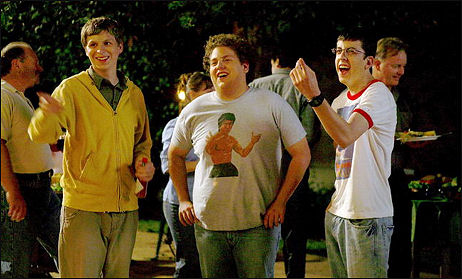
Superbad costars Michael Cera, Jonah Hill, Christopher Mintz-Plasse
So the film sells itself, but the only way to change things at this stage of the game is to sneak it. And yet Sony, for reasons that will perhaps one day be understood, is not planning to do this, according to two Sony publicists I spoke to this morning.
R-rated comedies take longer to build awareness. TV buys are very limited with a blue comedy of this sort. There’s a huge word-of-mouth screening program going on right now, yes, but Superbad clearly sells itself like gangbusters so why not sneak it? What could the possible downside be to this strategy?
I saw Superbad again last night, this time with my son Jett, 19. He loved it — laughed, howled, thought everyone and everything was out-of-sight brilliant except for some of the more outlandish stuff with the alchoholic, self-destructive cops (Seth Rogen, Bill Hader). But he was also adamant as we came out that the Sony green-band trailer (i.e., the more widely distributed family-friendly version) has totally blown it in conveying how off-the-ground funny and super-witty this film really is.
“The trailer is not selling what it is,” Jett said twice. “It shows the physical slapstick comedy and the gross-out stuff, but none of the really wild-ass funny material. And the poster doesn’t say much of anything.”
I agree about the poster also. it’s just Jonah Hill and Michael Cera standing there and going “‘huh?”

” I was feeling kind ‘maybe’ about it, based on the trailer,” Jett said. “I knew that Jonah Hill and Seth Rogen being in it meant it would probably be pretty funny, but now that I know that it’s much better than this, I think they’re really blowing it.”
The R-rated red-band trailer does a slightly better job at conveying how Superbad plays. It’s viewable on the Superbad site, but red-band trailers are rarely shown in theatres and can’t be shown on the tube.
This morning’s tracking indicates that others out there have had the same reaction to the green-band trailer that Jett had — one of limited enthusiasm — before seeing it.
A marketing veteran tells me the only way Sony marketers could get the real magic and flavor of this film would to be to show an entire scene — the first McLovin fake ID scene when Hill rips into Christopher Mintz-Plasse for being an idiot — but that would necessitate including profanity and that means the usual restrictios.
In my 7.12 review, I called Superbad “the funniest, most cleverly written youth comedy in I-don’t-know- how-many-years. Produced by Judd Apatow and co-written by Seth Rogen and Evan Goldberg, it’s a better teen-sex film — funnier, wilder, more truthful even — than The 40 Year-Old Virgin or Knocked Up are in their respective realms.
“It also marks the return of director Greg Mottola, who’s been working steadily on television but languishing in movie jail since the success d’estime of The Daytrippers eleven years ago.
“Superbad also heralds the arrival of the funniest comic trio since the post-Duck Soup Marx Brothers — Jonah Hill (sociopathic big-mouthed fat guy), Michael Cera (bright, quiet, thoughtful guy) and Christopher Mintz-Plasse (dweeby, pale-faced nerd). I’m serious — these guys are the total dynamo right now.
“You should have heard the crowd laughing last night at the Arclight. The oil was blowing out of the ground and splattering everyone in sight.”
Denby “Ultimatum”
In the Bourne movies, Matt Damon “looks like a bullet [with] short hair, no stubble to speak of, and a blunt nose,” New Yorker critic David Denby observes. “In violent scenes, his eyes go dead, and he has a strong, compact body, which he hurls through the frame, ricocheting off walls, windows, cars, and fences. As Damon plays him — silent, wary — Bourne thinks with his body. He seems to have sensors attached to his limbs and his head, and he reacts instantly to threats.
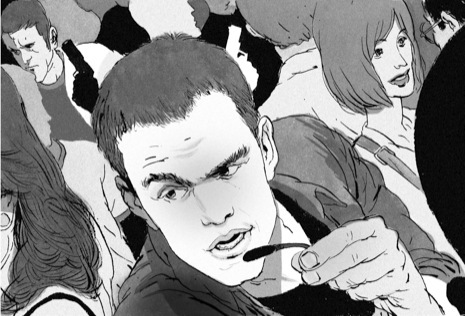
New Yorker illustration by Frank Stockton
“I used to be a purist about action sequences, demanding that bodies in combat be seen in full frame and without too much cutting. A few directors are still capable of that kind of classicism (Wolfgang Petersen in Troy, David Cronenberg in A History of Violence), but Paul Greengrass, who also made the superb United 93, shoots scenes in tiny fragments, and when he does it I see the point — the gain in speed and power is extraordinary.
“The camera trembles and shakes and hurtles in Ultimatum, as if we were trapped inside the moving Bourne, and yet, on the fly, we see what we need to see. Gathering the fragments, Greengrass keeps some of the chase scenes going for ten minutes at a time. You come out of the movie both excited and soothed, as if your body had been worked on by felt-covered drumsticks.”
“Bourne” cutting
At a San Franciso Film Festival seminar last April I asked legendary editor Walter Murch (Cold Mountain, Apocalypse Now, The Unbearable Lightness of Being, The Talented Mr. Ripley) about machine-gun cutting in action movies, and at what point does it get to be too much? I was thinking at the time of the editing in 2004’s The Bourne Supremacy, portions of which had driven me crazy. Murch said audiences do indeed start to go crazy if you use more than 14 set-ups per minute.
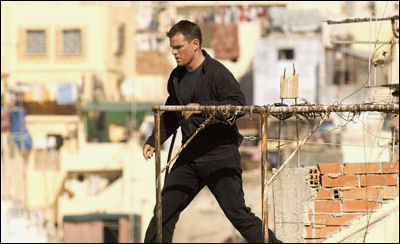
One can obviously cut back to the same set-up — a visual point of view — within a given minute, so Murch wasn’t saying only 14 cuts every 60 seconds. Nor was he necessarily putting a limit on the number of cuts per set-up. But let’s say for the sake of simplicity that during an action sequence you use two cuts per set-up — by Murch’s rule that would mean no more than 28 cuts per minute, or a little more than two seconds per cut. That sounds too frenzied, doesn’t it? But maybe not.
In an 8.2 Hollywod Reporter interview, Carolyn Giardina has spoken to to Bourne Ultimatum editor Christopher Rouse and producer Patrick Crowley about the mathematics of cutting in their new film.
Variety‘s Todd McCarthy has reported The Bourne Ultimatum‘s running time as 115 minutes. Subtract seven or eight minutes of opening and closing credits and you’re down to 107 minutes of actual footage. Crowley tells Giardina that Ultimatum has “about 4000 cuts.” Divide those 4000 cuts by 107 minutes and you’re left with 37 cuts per minute, or a cut every one and two-thirds seconds.
Crowley doesn’t say how many set-ups were used in Ultimatum so there’s room for interpretation, but if you go by Murch’s rule — no more than 14 set-ups per minute — and then a hypothetical 28 cuts per minute if you use two cuts per-set-up, Ultimatum has been cut more than 25% faster.
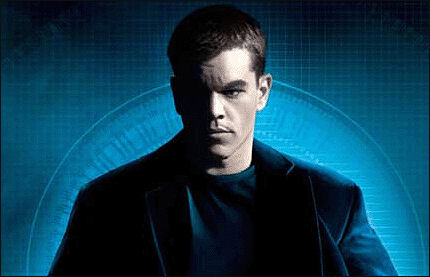
In other words, according to one interpretation of Murch’s law, The Bourne Ultimatum is going to drive a lot of people crazy. Only it doesn’t. This is probably due to the set-up count. Perhaps Rouse is cutting back and forth between only seven or eight set-ups per minute, or nine or ten. A lot of the film is obviously fluid and moving and hand-held. To repeat, Murch’s law is about not laying too many cuts on an audience within a given minute, but too many points of view.
The funny part is that The Bourne Supremacy was cut slower — 3500 cuts, according to Crowley — and yet it irritated me here and there. During the three or four high-velocity stand-out sequences, that is. And yet Ultimatum, for whatever reason, isn’t irksome at all.
Supremacy ran 109 minutes, so take away 7 or 8 minutes for credits and you’re left with 102 minutes. 3500 cuts means a little more than 32 cuts per minute, or a little more than one every two seconds.
